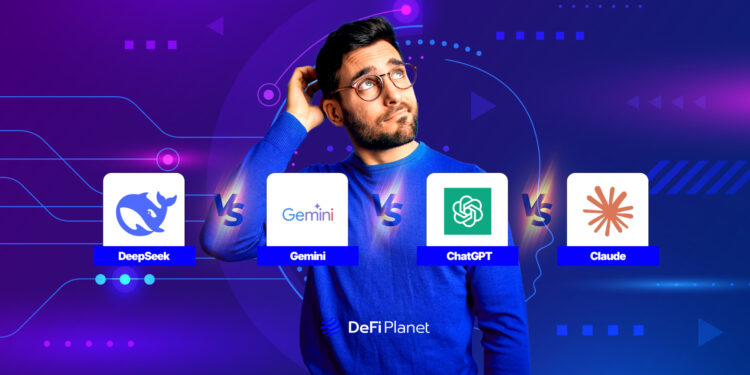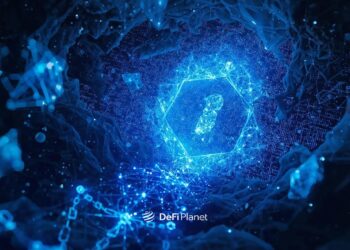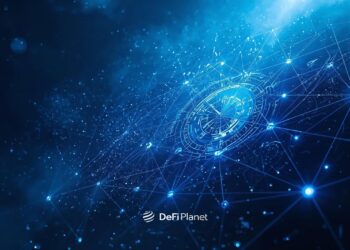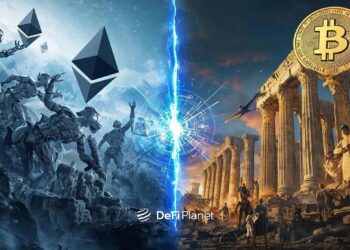Last updated on June 23rd, 2025 at 08:05 pm
Artificial intelligence and crypto have been two of the biggest tech stories of the past few years—and now they’re colliding in practical ways. As the crypto industry evolves, large language models (LLMs) like ChatGPT, DeepSeek, Gemini Pro, and Claude Sonnet are becoming essential tools for developers, traders, and researchers alike.
The sudden rise of DeepSeek in early 2025 showed that even established leaders like OpenAI aren’t untouchable. DeepSeek hit the U.S. App Store’s top spot in a matter of days, challenging the dominance ChatGPT had held since 2022. Meanwhile, Google’s Gemini Pro and Anthropic’s Claude Sonnet are pushing the boundaries on factual accuracy, long-context understanding, and AI safety—all qualities that matter deeply in a space as volatile and technical as crypto.
This article compares how these four leading LLMs stack up for the crypto industry. While all are powerful general-purpose AI models, their architecture, strengths, and ideal use cases differ. We’ll break down their performance in three core areas—development, trading, and research—before exploring how AI and crypto are moving from tools to true collaborators.
Core Architecture and Performance
All four models—ChatGPT-4o, DeepSeek R1, Gemini Pro 1.5, and Claude Sonnet 3—are large language models. These are AI systems trained on massive amounts of text and code, optimized for reasoning, summarizing, translating, and even generating new ideas. But their structure and performance are far from identical.
ChatGPT-4o, one of the many OpenAI’s flagship model, is a multimodal, general-purpose model. It can handle text, images, and voice inputs, and it supports a wide range of plugins. It’s designed to be the Swiss army knife of AI—versatile, polished, and user-friendly. With a 200K token context window, it can also handle large documents, datasets, and technical whitepapers with ease.
DeepSeek R1, by contrast, takes a more specialized approach. It uses a Mixture of Experts (MoE) architecture, activating only a fraction of its 671 billion parameters for each query. This means it’s highly efficient and extremely good at math-heavy tasks, logic, and debugging code. DeepSeek is also open-source, which gives crypto developers more control over how the model is deployed and fine-tuned.
Claude Sonnet 3, from Anthropic, is optimized for structured dialogue and safety. Its training favors thoughtful, logically consistent outputs, often with strong guardrails. It’s especially good at digesting dense material and producing consistent, readable outputs. It also offers a 200K context window, putting it in the same long-range league as GPT-4o.
Gemini Pro 1.5, built by Google DeepMind, leans into contextual and cross-app functionality. It performs well in data-heavy tasks and integrates directly into Google Workspace, which is especially valuable for crypto teams working across Sheets, Docs, and Slides. It’s fast, clean, and particularly good at contextual navigation—an asset for users who need to pull insights from messy data or long reports.
Which LLMs/AI Chatbot to Use As a Participant in the Crypto Market
Use Case | Best Model | Why |
| Developers | DeepSeek, Claude | Superior logic/coding support; Claude adds safe reasoning |
| Traders | ChatGPT, Gemini | Real-time plugins; Gemini fits Google-based tools |
| Researchers | Claude, ChatGPT | Long-context analysis; multimodal explanations |
From a performance standpoint:
- DeepSeek leads in logic-heavy and math-based tasks, often outperforming others in STEM benchmarks.
- ChatGPT excels in multimodal and plugin-rich environments, making it a go-to for interactive workflows.
- Gemini is sharp with fact retrieval and tight integrations, while Claude is best for thoughtful summarization and clean reasoning.
Each model is powerful, but their core strengths point to different use cases—especially when applied to crypto.
Use Case 1: For Crypto Developers
In blockchain, precision matters. Smart contract bugs, inefficient code, and protocol vulnerabilities can cost millions. For developers, the right AI assistant isn’t just about generating code—it’s about solving problems under pressure.
DeepSeek-R1 and DeepSeek-Coder-V2 stand out here. Their structured reasoning and high accuracy in logic-heavy tasks make them ideal for smart contract development, debugging, and security audits. DeepSeek consistently ranks high in programming benchmarks, and its open-source nature allows devs to fine-tune it for specific protocols or EVM environments.
Anecdotes back this up. Javier Aguirre, an AI researcher, shared how DeepSeek solved a complex problem ChatGPT couldn’t—highlighting its ability to reason through edge cases in code logic. For DeFi builders, this type of deterministic output is a serious asset.
ChatGPT-4o, while not as specialized, still performs well in coding tasks. Its strength lies in flexibility—generating boilerplate code, writing documentation, explaining concepts to teams, and even brainstorming ideas for tokenomics or protocol design. Its multimodal capabilities also let developers feed in charts, diagrams, or screenshots for context.
Claude Sonnet 3 offers a middle ground. It’s highly structured, safe, and good at walking through step-by-step explanations. It’s helpful for devs working on protocol architecture or translating dense whitepaper logic into readable language.
Gemini Pro 1.5, on the other hand, excels in integrations—particularly with collaborative tools. Teams building dApps can use Gemini inside Google Docs or Sheets for spec writing, bug tracking, and project coordination.
The table below highlights their major differences:
Feature | DeepSeek | GPT-4o |
| Technology and Architecture | Mixture of Experts (MoE) model with 671B parameters (activates only 37B per query) | According to IBM Chatgpt makes use of Transformer-based architectures with 1.8T parameters (monolithic structure)a |
| Training Costs | Trained on 2,048 Nvidia H800 GPUs ($5.5766M training cost)b | Requires extensive computational resources for example, OpenAI’s GPT 4 had a technical creation cost of $78 millionc |
| Mathematical and Logical Proficiency | Exceptional in structured reasoning, coding, and mathematical problem-solving. It has a 90% accuracy rate in mathematics according tod datacamp.com | Strong in multi-step reasoning but less specialized in mathematics and logic |
| Multi-Modal Capabilities | Primarily text-based | Supports text, voice, and image processing |
| Token Limit | 128K tokens | 200K tokens |
| Affordability | Free and open-source, with lower API costs | Subscription-based with free and premium plans |
| Customization & Open-Source | Fully open-source, allowing developers to modify and integrate freely | Closed-source, with API access for enterprise users |
| Use Case Specialization | Excels in technical tasks, including coding and mathematical research | Versatile for creative writing, general knowledge, and brainstorming |
Use Case 2: For Crypto Traders
Crypto trading is fast, noisy, and highly reactive. Traders need tools that can parse market sentiment, flag trends, and automate decision-making—all in near real-time.
ChatGPT-4o is the most trader-friendly of the four. Its plugin ecosystem connects directly with TradingView, CoinMarketCap, and other tools. You can ask it to summarize on-chain flows, interpret charts, or draft a quick sentiment summary from crypto Twitter. Its voice support also lets traders multitask while on the go.
Gemini Pro brings clean data handling to the table. It’s fast and precise when parsing raw reports, DEX listings, or economic data. Google integrations give it an edge for those who trade using spreadsheets, backtests, or visual dashboards.
Claude Sonnet offers a measured, contextual take—useful for traders who want deeper analysis. It’s slower-paced, but reliable for digesting long regulatory updates, interpreting macroeconomic signals, or comparing multiple project fundamentals before investing.
DeepSeek is the least ideal for market-facing tasks. While excellent at modeling logic and even quant-style analysis, it lacks real-time data access and plugin support. However, if a trader needs to build a backtesting engine or write custom scripts for DeFi protocols, DeepSeek still has a place.
Use Case 3: For Crypto Researchers
Crypto researchers operate at the intersection of technology, finance, and policy. They need AI tools that can digest large amounts of data, simplify technical papers, and spot emerging narratives.
IBM arxivb HAI Artificial Intelligence Index Report 2024c Datacamp
Feature | DeepSeek | ChatGPT |
| Mathematical Accuracy | 90% | 83% |
| Coding Performance | 97% success in logic puzzles | 89th percentile on Codeforces |
| Reasoning Capability | Strong in structured reasoning | Excels in multi-step reasoning across various fields |
| Computational Efficiency | Lower energy consumption due to MoE framework | Higher computational demands due to monolithic structure |
| Use Case Focus | Specialized in programming, blockchain security, and algorithmic trading | Generalist model for diverse applications, including finance, linguistics, and creative tasks |
ChatGPT-4o is the most versatile for research. With a 200K token context window, it can handle long-form whitepapers, regulatory documents, and even transcribe and summarize interviews or community calls. Researchers can feed in multiple data sources—PDFs, charts, on-chain activity—and get back structured insights quickly. Its ability to switch between styles (formal summaries, casual explainer, technical commentary) is a bonus.
Claude Sonnet 3.0 shines when clarity is key. It’s ideal for researchers who want accurate, logically consistent summaries of complex material. Claude tends to be more cautious and thorough in how it interprets input, making it a strong companion for analyzing cryptographic algorithms, compliance frameworks, or Layer-2 protocol designs.
Gemini Pro 1.5 brings collaborative power. It thrives in multi-document environments, helping teams annotate, review, and refine findings together inside shared workspaces. For researchers building reports across a team—especially in Google Docs or Slides—Gemini adds serious productivity.
DeepSeek, while not context-heavy, excels in specialized tasks. It’s great for testing hypotheses in code, running logic checks on new consensus models, or validating mathematical assumptions in cryptographic systems. It’s more of a technical research assistant than a content summarizer.
Final Thoughts
This marriage of AI and blockchain, which is already beginning to take shape through the public use of LLMs, is inevitable. Both technologies are on track to become intertwined in both philosophical and practical ways.
On a conceptual level, AI needs a mechanism to verify the authenticity of data, and blockchain is uniquely positioned to provide this, offering a decentralized and immutable ledger. On the flip side, blockchain requires a way to scale its solutions into broader, more accessible forms—and AI is the perfect tool for this, with its ability to process vast amounts of data, identify patterns, and optimize operations.
So we should expect a future where AI models will no longer be mere “assistants” within the crypto world, but rather integral and autonomous components of the underlying infrastructure. These kinds of innovations are already in early stages and are rapidly advancing side-by-side with AI tech.
The synergy between these technologies will drive the next phase of innovation, creating a more intelligent, efficient, and self-sustaining crypto ecosystem.
Disclaimer: This article is intended solely for informational purposes and should not be considered trading or investment advice. Nothing herein should be construed as financial, legal, or tax advice. Trading or investing in cryptocurrencies carries a considerable risk of financial loss. Always conduct due diligence.
If you want to read more market analyses like this one, visit DeFi Planet and follow us on Twitter, LinkedIn, Facebook, Instagram, and CoinMarketCap Community.
Take control of your crypto portfolio with MARKETS PRO, DeFi Planet’s suite of analytics tools.”





















